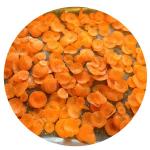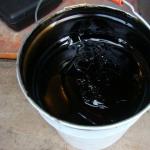Entrance doors of apartments and private houses must not only be insulated, but also, if necessary, sealed, achieving the maximum possible tightness between the leaf and the frame allowed by their design features. The effect of a correctly performed seal will make itself felt immediately - your apartment or home will become warmer and even cleaner; there will be fewer drafts, if they do not disappear completely; Annoying extraneous sounds and odors will no longer penetrate from the entrance or from the street. You can do the sealing of any doorway yourself - for this there are several ways to do this work and types of seals for both metal and wooden doors, as they say, to suit any ability and budget of the home owner.
Where and how to start correctly - preparatory work
First, we inspect the door and frame. If they already have some kind of seal that has ceased to perform its functions, then it must be dismantled. After this, if necessary, we perform preliminary cleaning of surfaces in those places where there was old material, removing its remains. We use fine sandpaper for this.
Then recommended if necessary. Distortions will cause uneven fit and wear of the seal. Different size gaps between the frame and the door at the top and bottom, left and right will also lead to this if the material of the same thickness is chosen for the entire opening. Or you will have to select a seal for each side of the opening. The critical value of the skew and the difference in gap sizes is 1–1.5 mm. If they are larger, then it is better to eliminate them by adjusting the door. It happens that performing this operation eliminates the reason why it was decided to seal the opening, and the need for such work disappears.
Now we decide on the installation location and type of seal. This determines which part of the door or frame needs to be measured in order to find out the required amount of material.
Then we measure the perimeter (or it is enough to just have the width and height in one place, and then add and multiply by 2) of the contour on which the sealing inserts will be installed. This is the total length the required material. But it is better to take it with a reserve, based on the location and method of installation.
Then, if the seal is intended to be installed in one of the gaps between the door and the frame, its required width and thickness should be determined. The first size is clear. It is determined by measuring the width of the installation site.
Regular plasticine is best suited for determining thickness. We place it on the box at the location where the material will be installed and close the door. Then we open it and measure the thickness of the flattened and lubricated plasticine. This will be the required height of the sealing insert. But this is the thickness of the material in a compressed state when the door is closed.
You need to take a slightly thicker seal. In this case, it is necessary to take into account what material the insert is made of, as well as its density, rigidity and strength. For example, a foam pad that is too thick may soon simply tear, while a rubber pad will prevent the door from closing well and will open it up, which will create additional stress on the lock and hinges, thereby shortening their service life. And if the insert is not thick enough, there may be gaps somewhere.

If the size of the gap on the left, right, bottom and top is different and very different, then it will be necessary to take thickness measurements using plasticine for each of these sides and, possibly, take material with the corresponding different height. For wooden unadjusted (skewed) doors, in the case of sealing with slats along the gap, adjustment may generally be required in at least 2 extreme points each side.
You need to buy sealing inserts in solid pieces of the required total length for all sides or for each of them, if it needs to be cut. And in any case, it is not recommended to use separate pieces, much less cuttings of the sealant. The result of such work will be poor-quality sealing of the door, therefore, if part of the material was damaged due to unsuccessful cutting or installation, it is better to purchase it in the required length.
After purchasing the material, we cut it into pieces if necessary. required sizes. And only immediately before installation, if necessary, do we prepare the surfaces on which the seal will be installed. We clean them from dust and dirt and remove convex irregularities. Then, if the seal is installed with adhesive base(self-adhesive) or using glue, the surface of a metal door must also be degreased (with white spirit, solvent, acetone or gasoline), and a wooden one must be sanded with the finest sandpaper (zero).
Then we begin installing the material. Sealing corners requires special attention, precision and accuracy. This is where the risk of leaving gaps is highest. When laying the seal in pieces (2 short ones for the bottom and top and 2 long ones for the left and right sides), loose joints may result between them. And when installed as a whole, the seal in the corners tends to wrinkle and/or may not attach tightly enough.
We seal a metal door - types of materials and their installation
The choice of seal must be taken no less seriously than its subsequent installation. After all, how long it will last also depends on this, and most importantly, it will be possible to increase the tightness of the opening, including. Choose desired type and type of material according to the following criteria:
- Design features front door: Are there special grooves or space for installing a sealing insert. They are provided in branded doors from reputable manufacturers.
- The location of the door is apartment in the entrance or with access to the street in a private house. Operating conditions such as temperature and humidity depend on this. Their performance is especially important in winter.
- The size of the gap in the doorway that needs to be eliminated.
Accordingly, we select a product with the necessary characteristics:
- 1. Type of material: rubber, plastic, polyethylene foam, silicone or foam rubber.
- 2. Type of profile: regular rectangular or square without cross-sectional cavities or profiled - can have the most different shape and cavities and/or projections, including those intended for mounting on a door.
- 3. Type or method of fastening: coupling of profile elements with the intended part of the door structure (for profiled seals); fixation with a clamping bar (metal or made of the same material); gluing with an adhesive backing (for self-adhesive inserts) or using universal glue or.
Note:
- 1. You can make your own seal: for example, we wrap foam rubber in leatherette or artificial leather. Installation is done by gluing.
- 2. Seals attached to self-tapping screws are installed only on wooden doors.
- 3. What compounds should be used to glue foam inserts is described in the article.
To seal a metal entrance door, rubber inserts are most often used. By the way, they are available in all types of profiles and mounting methods. Various profiled products are in great demand rubber seals, the most common of which are shaped like letters:
- C, K and E-profiles - used for small gaps - up to 3 mm - between the frame and the door;
- P and V profiles – for medium gaps measuring 3–5 mm;
- D and O profiles – for large gaps up to 7 mm.
Most profiled inserts are designed for installation in the opening on the end of the door or opposite it on the frame. The latter are mounted only by gluing. Doors can also be so-called mortise - they are installed by pressing into a special groove on the door frame. There are also sealing inserts installed on the door frame. They just stick together. When the vestibule is double, the material is usually mounted on each of them. The dimensions of the insert for the first and second vestibules are different. There are also seals that are mounted not in the opening, but on the edge (end) of the outer decorative sheet of the door.
Solid rectangular and square rubber seals are no less in demand. Mounted by gluing in the opening and/or on the porch and on the door and/or frame.

Plastic, polyethylene foam and silicone seals are also produced in almost all of the types listed above (rubber). Foam rubber - mostly of solid rectangular and square cross-section, but there are also profiled products with a simple profile. But all foam rubber seals are installed only by gluing.
Rubber, plastic, polyethylene foam and silicone plastic sealing inserts are produced different colors, which allows you to choose the material to match the color of the door or its tone. Rubber seals have the most colors. However, experts say that dyes significantly reduce the quality of seals. And first of all, again, this applies to rubber products.
The seal is installed in the selected location of the frame and/or door along their entire perimeter and in accordance with the intended type of installation. A joint is usually made at the corners, that is, the material is cut. To do this, first measure the required length for each side from one corner to the other. Then the material is cut into pieces, which are cut from the total skein at an angle of 45 o . And then they install it.
Self-adhesive (with a base in the form of a film on which glue is applied), as many believe, are the easiest to install. The protective paper from their adhesive base must be removed during the process (after cutting into pieces) and as the seal is installed . That is, they separated the paper from a small section of the material and immediately pressed it against the door. And so we move gradually, but without stopping, until we finish the entire opening (if we seal it with a single piece of insert) or one of its sides (when the door seal is cut into 4 parts). Then press the sealing insert well again. If the glued seal comes off after some time, then it must be glued with Moment glue.
Sealing a wooden door - the most common options
To compact wooden door, you can glue any of the materials listed in the previous chapter, profiled or with a solid rectangular (square) cross-section. Of course, from among those that are designed for such installation (self-adhesive and mounted with glue). For greater reliability of attachment, you can additionally screw the sealing inserts through the washers with self-tapping screws. The installation locations are the same as for a metal door.

Or you can make the seal using your own material - the so-called rollers. We wrap some kind of insulation (foam rubber is most often used) in leatherette or artificial leather. This is the roller. It must be installed inside the apartment (house). Installation is carried out:
- On the box - along its inner surface on the left, right and top at a short distance from the door. It is necessary to ensure that the door fits snugly against the rollers when closing. Rollers are not mounted on the threshold because they wear out very quickly.
- And on the door - to its lower edge.
The rollers are fastened with decorative nails along the side opposite to where the leatherette is folded in half around the foam rubber.
Despite the effectiveness of sealing using the above methods, it is currently customary to use a variety of floor strips for wooden doors:
- wedge-shaped strips;
- external strips;
- plastic tubes inserted into grooves using special clamps on them;
- metal and plastic strips with a brush or rubber band;
- and others.
A wedge-shaped strip is installed on the frame in the corner between the rebate and the surface opposite the frame of the closed door. Moreover, installation is done only for the upper part of the opening and its sides. Before installation, the plank is cut to the dimensions of these installation locations. For joining points (at the top of the opening) cut at an angle of 45 degrees. And it is necessary to trim the strip in places where it will be adjacent to door lock and loops. Then we nail it down.
The outer strip is installed on the door stop of the frame (that is, it is, as it were, a continuation of the vestibule). It is also cut to the size of the opening for its top and sides. Mounted using screws or self-tapping screws. After correct installation There should be a sheet of paper between the bar and the closed door.
There are also slats that are installed on the outer face of the door, closing the gap in the opening. They are also first cut into pieces of the required sizes. Then they screw it to the door, which must be closed. It is very important to carry out installation with corrosion-resistant screws - rusted hardware can cause rotting of a wooden door.
The bottom of the doorway is sealed with other types of planks, the technology of which is also slightly different . Some flashing strips are nailed to the threshold, while others are nailed to the inside face of the door. All of them are cut to the width of the bottom of the doorway and secured with screws.
Flat threshold products are an aluminum or plastic base with a brush or rubber plate attached to the bottom. Such strips can be installed on both external and internal doors. After proper installation, the gap between the flat strip and the threshold should be minimal. But at the same time, the bar should not interfere with the easy free opening and closing of the door. Some types of flat planks are equipped with special (elongated) holes for screws, thanks to which you can adjust the height of their installation.
Threshold products with a plastic shield prevent the penetration of moist air into the apartment (house). As a rule, they are installed on an external door.
Combined slats consist of 2 metal strips, one of which has a nylon brush attached. The product without a brush is mounted on the threshold. And the bar with the brush is on the door. The rail on the threshold is equipped with a special groove that prevents water from penetrating into the room.
After correct installation of the combined strip, the hanging edge of the strip installed on the threshold should “look” towards the premises. And the door trim brush should exert slight pressure on the threshold rail.
How to insulate the front door with your own hands (10+)
Insulation and sealing of the entrance door
The front door is often the source of a draft. It blows into the living space through it cold air. IN apartment building this air comes from staircase along with cigarette smoke and other foreign substances. The seal not only protects from the cold, but also saves from foreign odors. In suburban housing, sealing is even more important, since the front door in this case usually opens directly onto the street.
The traditional sealing method is inconvenient
Usually special self-adhesive seals are sold for insulation. They are proposed to be glued between the door and the frame at the points of their contact. But this approach has shown to be ineffective. The seal installed in this way is very sensitive to door distortions. The slightest misalignment leads to loss of tightness, as the seal no longer fits. Installing such a tape is also not easy. Only if the door is perfectly positioned can you simply glue the strip on. Otherwise, the distance between the door and the frame is different places miscellaneous. So you have to put something under the sealing tape to ensure a secure fit.
How to properly insulate your front door
Another approach is reliable. It is shown in the picture.
The seal is not installed between the door and the jamb, but on the jamb, so that it fits snugly against the door. At the same time, the seal has a greater degree of freedom and, accordingly, ensures tightness even with greater door deformation. This installation method does not depend on the initial position of the door relative to the frame, since when gluing, the seal can be installed exactly in the position that will ensure sealing.
For this work I use Moment glue. The work is done like this. The door frame in the place where the seal will be glued is lubricated with glue. The sealing tape itself is cut to the required length. The edges are cut at 45 degrees to join other strips of tape. The side that will be glued is also lubricated with glue. The glue is kept for 15 minutes. Then the door closes. The tape is applied to the area coated with glue so that it fits snugly against the door, and is pressed firmly with your hands for 2 - 3 seconds. Then the glue is left for a day to dry completely.
As sealing tape It is convenient to use a rubber tube (only the rubber must be stable, not decompose and not get dirty) or a special sealing cord round section made of foamed polyethylene.
Disadvantages of such insulation
The only drawback of the method is that if you accidentally touch the seal, it can be torn off. Okay. Gluing it in place is not difficult at all.
Example of a sealed door

Unfortunately, errors are periodically found in articles; they are corrected, articles are supplemented, developed, and new ones are prepared. Subscribe to the news to stay informed.
If something is unclear, be sure to ask!
Ask a question. Discussion of the article.
More articles
Insulation, thermal insulation of the house with your own hands...
Insulation, thermal insulation of the house. Little known, but very important facts, I share personally...
Why is it cold at home, where does the heat go, heat loss....
Why is it cold at home? Where does the heat go? How to make it warm? Those losses...
Why does a wooden floor squeak...
My practical experience in dealing with floor squeaks. And also advice from old people. How do I get off...
Why does concrete crumble, crack, collapse in the foundation, walkway,...
The path and foundation were poured in the summer. After winter, serious damage is visible, observing...
Fence posts, DIY fences. Put it up, install it, dig it in...
Fence posts, fencing. Let's do it good support for the fence, so that the fence lasts...
Homemade extension ladder. With my own hands. Prefabricated, collapsible,...
How to make a reliable folding ladder yourself....
Glued wood board. Characteristics. Application. Choice....
How to choose furniture board. Features of application. Technological properties. Ex...
Selecting a submersible well pump. Experience. Review...
How to choose a well pump. Which one to take, vibration or centrifugal. Experience in...
They often fail to cope with their main task - saving heat in the apartment. And this is even with high-quality internal filler. A sealant for metal doors allows you to solve the problem of sealing joints.
Seal functions
There are a number of tasks that are assigned to the seal for metal doors:
- protection of housing from intrusion unpleasant odors outside;
- eliminating drafts;
- ensuring a reliable fit of the canvas to the structure door frame;
- preventing the spread of smoke and fire in the event of fire hazardous situations.
Types
On metal doors it can be done using several types of sealing tapes. Depending on the nature of the manufacturing material, the following types of products are distinguished:
- rubber;
- plastic;
- silicone;
- foam;
- polyurethane.
Let's find out which seal for metal doors is better, consider the pros and cons of individual solutions.
Rubber

It is most often used to seal doors that open directly onto the street. This method of application is due to the specific properties of rubber. If it contains various modifiers, such a seal for metal doors perfectly adapts to the most severe operating conditions.
Among the advantages of the rubber seal it is worth highlighting:
- long service life;
- special resistance to environmental influences;
- high elasticity, which prevents the appearance of cracks as the product is used;
- absolute waterproofness;
- low cost.
Separately, it is worth highlighting self-adhesive for metal doors. The use of the latter greatly simplifies the installation process and eliminates additional waste on the purchase of fasteners.
Silicone

For metal doors it is inferior, according to some indicators, to products made from rubber. The material has increased elasticity, which facilitates its installation on surfaces of various textures. However, the main disadvantage here is the inability to modernize the composition with special additives that slow down the destruction of the structure under the influence of moisture, ultraviolet radiation, and temperature changes. As a result, silicone seals are rarely used to seal external doors.
Foam rubber

The foam seal is the most budget solution. Often they resort to its use with the expectation of serving for one season. Such products can no longer withstand regular use of doors.
An old foam rubber seal often begins to disintegrate and crumble under the influence of humidity and sudden temperature changes. Over time, the material clumps into a lump, loses its original elasticity and ultimately ceases to cope with the assigned tasks.
Polyurethane
Both conventional and self-adhesive seals for metal doors, made of polyurethane, have quite good characteristics. Products in this category are easy to install and durable. However, polyurethane has a relatively low resistance to mechanical stress and abrasion. Therefore, it is highly not recommended to install such a seal on doors that are subject to regular use.
Plastic

Plastic seals have excellent sealing properties. Most products in this category have a hollow internal structure. Thanks to this feature, an additional sealing contour is created in the form of an air chamber along the edge of the door, which ensures heat retention in the room.
Plastic products have an affordable price, but their installation can be difficult. The fact is that such products are installed in a groove and for this reason must be selected individually in accordance design features specific door.
How to choose a seal for a metal door?
When you go shopping for material to seal your front door, you should pay attention to the following recommendations:
- If preference is given to self-adhesive material, you should check the shelf life of the glue that will be applied to the inside of the product.
- It is highly not recommended to seal metal doors that face the street with foam rubber. As a rule, such structures account for an increased number of openings and closings. Therefore, in in this case the material will quickly become completely unusable.
- Before choosing a specific type of seal, you must carefully study the information regarding the qualities of the material, technical characteristics, operating features, shelf life.
- To make sure the product is tight, just press on its surface. If the seal instantly restores its shape, this option is suitable for installation on entrance doors.
- How to glue a seal to a metal entrance door? To do this, you should use high-quality glue. It is better to give preference to products made on the basis of silicone, which have good sealing properties.
- Attention should be paid to the shade of the product. In most cases, seals are offered to the consumer standard colors: white, black and brown. However, some manufacturers allow you to choose the shade of the material individually, in accordance with the color of the door.
- It is better to pay attention to products of medium hardness. Frankly soft materials quickly lose their original properties. At the same time, hard seals can prevent the door from closing freely.
- The self-adhesive product must have a textured inner surface. The presence of a coating of small fiberglass particles is welcome, which will ensure the most reliable adhesion of surfaces.

Let's figure out how to properly install a seal on a metal door.
First, the old sealing material is dismantled. Surfaces are thoroughly cleaned. To do this, it is advisable to use fine sandpaper. In conclusion preparatory work The ends of the door are washed with an alcohol solution or acetone, which helps degrease the surfaces.
Often a metal door is installed at the entrance to a room. In this case, it is recommended to install several layers of sealant. This approach allows for the most reliable sealing of joints. Several contours are superimposed on the door frame and the inner edge of the leaf, while the remaining one is mounted on the outer surface of the door. At the same time, the main requirement for the quality of the external seal is: resistance to mechanical damage, temperature changes, moisture.
Installation of rubber products is carried out using glue. How to properly stick a seal on a metal door? During the work, the surface of the tape is gradually covered with a binder as it is applied to the end and pressed tightly against the surface. If it is necessary to install a rubber product on a painted base, at least several weeks must pass from the moment of painting.
Most simple solution installation of a self-adhesive seal is recommended. For installation, it is enough to remove the protective strip that covers the inner surface of the product, and then evenly distribute the material along the edge of the door leaf. If the seal begins to come loose during use, it is worth additionally securing it with glue or sealant.
It is not recommended to use separate pieces of material during installation. Such actions entail poor-quality sealing of joints. Particular attention should be paid to sealing the corners. This is where the risk of wrinkling and insufficient adhesion of the material increases.
In conclusion

Seals are an extremely convenient means of sealing the joints of the front door. All of them have one common advantage - ease of installation and operation.
To eliminate drafts, protect the room from the penetration of extraneous sounds and unpleasant odors from the outside, no special skills are required, professional tool And special training. During the installation process, you only need to clean and degrease the surfaces, treat them with glue or sealant and evenly apply the sealant to the joints.
Especially convenient solution self-adhesive products appear. Their installation does not require the purchase of glue or additional fasteners. Such seals last quite a long time; at the first need, they can be easily dismantled and replaced with new material.
The main reason for drafts and unpleasant odors in the area of the front door is a worn or poor-quality seal. Even if the door is insulated, heat loss inevitably increases over time. One fine day you will notice that extraneous noises have begun to penetrate into the apartment, and closing the metal door makes a lot of noise. The reason is the same.
The problem can be resolved by installing an additional seal. But you need a special one - for metal doors. Installation is quite easy to do yourself - instructions are included with certified products. With its help, you can solve another problem - insulating an iron door. But first of all, you need to decide what material is needed in this or that case.
Purpose of the seal
In the very name of this element door hardware lies the meaning of its use. The main functions of the seal include:
- Protection from outside air (humid, hot or cold), foreign odors, dirt and dust.
- Sound insulation – reducing the level of extraneous noise and audibility of what is happening in the apartment.
- Thermal insulation – minimizing heat loss.
- Sealing the door frame by ensuring the tightness of the mating of its components.
In accordance with the above objectives, the seal must meet the following requirements:
- Ensuring complete tightness of the room, preventing the entry of extraneous noise, odors, moisture, etc.
- Ensuring reliable, smooth and silent closing of the front door.
- Eliminates the occurrence of gaps under conditions of sudden temperature changes.
- Providing additional fire safety–preventing the spread of smoke and fire.

Types of seals for metal doors
Seal for iron doors Depending on the material of manufacture, it is classified as follows:
- Rubber. It is characterized by low cost, long service life and resistance to adverse influences. Especially products made of acid-resistant rubber.
- Silicone. It is highly environmentally friendly.
There are also polyurethane, plastic and foam rubber, which do not have high abrasion resistance, so they are used for sealing interior doors. Despite the ease of installation (they have a self-adhesive film) and low cost, they are not practical to use on metal doors.
The main type of seal used for metal structures– rubber.
According to the method of fastening, the seal for iron doors is divided into the following types:
- Magnetic.
- With additional clamping mechanism.
- Self-adhesive.
Magnetic seals for metal doors have recently appeared on the market and are used mainly by manufacturers of door structures. This is an analogue of the seals used in refrigerators. It has a magnetic insert in a thermoplastic elastomer tube that is resistant to aging and temperature fluctuations (from -65 to +90 degrees).
Mounted on the door itself and the frame to ensure normal attraction. The difficulty of use is that the optimal force of attraction is difficult to select. If it is too large, the door will be difficult for a child to use, and if it is small, the required seal will not be provided.
With an additional clamping mechanism, it is distinguished by the need to attach a strip that holds the insulation in a given position and place. In addition, the bar allows you to maintain its shape for a long time.

Rules for choosing a seal for a metal door
First, the shape, type and quantity of sealant required is determined. It is sold in the form of rolls ( average length tapes - 6 m), so one for standard door enough.
The shape and thickness of the tape is determined by the gaps in the metal door. To measure them correctly, plasticine is used. It is wrapped in polyethylene and inserted into the gap between the canvas and the frame with the door closed. Then the plasticine is removed, and its compressed part is measured with a ruler.
If the gap is between 1 and 3 mm, a foam rubber, polyethylene foam or polyvinyl chloride seal with a rectangular shape is used. Rubber sealant is used for gaps of 3 mm or more. At the same time, its shape varies depending on the thickness of the gap:
- C-shaped, K-shaped or E-shaped profiles are used with minimal gaps (3 mm).
- P-shaped or V-shaped is used for gaps up to 5 mm.
- O-shaped and D-shaped - with the largest gaps (from 5 to 7 mm).
When purchasing a seal, follow the following rules:
- When choosing a self-adhesive tape, be sure to check the shelf life of the glue. The adhesive part should be covered with small particles of fiberglass.
- All information about the material is studied, technical features and expiration date.
- Hermetic properties are checked. Lightly press on it. If it quickly returns to shape, then the material is good quality. The material should be of medium hardness. This one lasts a long time and does not interfere with closing.
The color is selected to match the color of the door, but it is worth remembering that the best color is black.

Installation on a metal door
As a rule, a factory iron door is equipped with a seal. If it is not there, installation is done by hand. Installation is carried out in compliance with the following rules:
- The tape is applied to a thoroughly cleaned and degreased surface. Cleaning is done with sandpaper, after which the surface is wiped with acetone or alcohol.
- To ensure more reliable sealing, several layers (usually two or three) are used. The first (and second) is laid on the canvas with inside, the second - on the box, and the third - with outside canvases. The external one should be more resistant to ultraviolet radiation, temperature changes and moisture.
- Rubber is placed on silicone glue. The tape is spread in a thick layer and pressed to the surface. Before installation on a painted surface, at least twenty days must pass from the moment of painting.
In the video you can see the door sealing process:
High-quality metal doors have special grooves into which a rubber seal is inserted.
Installation of self-adhesive seal
The procedure couldn't be easier. The surface is cleaned and degreased. The protective film is gradually removed, and the tape is pressed against the surface. This is done along the entire perimeter of the canvas. In the process, tension on the end adjusts the evenness of the tape. Then everything is smoothed out with the palm of your hand.
If the tape comes off, installation adhesive or sealant is used.
Particular attention is paid to laying in corners - these are where it is most difficult to achieve even distribution of the tape. She winces and moves away. After the seal is completely glued, its remains are cut off with scissors or a painting knife.
It is important to always keep warm in any room, especially during cold seasons. Therefore, it is advisable to insulate not only windows, but also doors, through which cold, wind and dust penetrate into the room no less, if not more. For this purpose, a variety of door seals are produced, which take care of maximum heat retention in a house, apartment, office, or public institution.

Purpose
Door seals are designed to eliminate cracks and gaps that allow cold air and winds to enter the room. It is impossible to live without them in a private house with doors opening directly onto the street. The door structure (especially if it is wooden or made from a similar material) tends to dry out or, conversely, absorb large number moisture during rains and dampness. Deformation of door frames creates conditions when the door cannot fit tightly to the jamb. It needs to either be replaced, which, of course, is not always possible, or use a saving inexpensive option in the form of a good seal, which will extend the life of the door and help retain heat in a living or working space.

In addition, there is another function of the seal - shock absorption, which is not directly related to the heat-saving function, but provides a softer contact of the door with the jamb, preventing loud impacts and unnecessary squeaking.
Requirements
Of course, in order to perform its main function, the seal must be of good quality.
Therefore, it must have the following properties:
- durable materials of manufacture - the service life of the sealing tape depends on them. If the tape is not of very good quality, it will quickly begin to lag behind the door and will simply be unusable;
- good insulation should adhere tightly to the surfaces surrounding it. This provides an obstacle to the penetration of cold air, winds and street dust into the room;
- resistance to constant mechanical stress - also required quality, because when opening and closing doors, as well as exposure to any external factors, materials poor quality will be subject to rapid wear;
- the material should not only be durable, but also bend well, not tear when trying to close door gaps and cracks with it, and be as soft as possible in order to minimize the sound of the door hitting its frame.


Species
All types of door seals are produced in the form of a tape, which has different lengths, width, thickness and color depending on the size of the cracks and gaps, as well as the color of a particular door in order to maintain aesthetics. The types of seal profiles may be different. A profile is a form of insulation that can have a cavity inside the material, the task of which is to eliminate gaps and seal cracks different sizes and forms. When compressed, good insulation does not suffer any damage. High-quality polyvinyl chloride (PVC) or polyurethane have this property. Profile shapes can be in the form of letters English alphabet: P, V, C, E, O and other configurations.

Sealing tape made from foam rubber is the most popular and inexpensive type. A self-adhesive film is attached to the foam rubber; its thickness may vary. Methods for attaching foam tape vary depending on the material from which the door frame is made. If it is wooden, the foam rubber is fixed to it with wallpaper nails, and if the entrance structure is metal, you can use strong glue, which is suitable for working with metal. Among the disadvantages of foam rubber tape, it should be noted that it is not wear-resistant and does not last long. Also, due to its porosity, foam rubber (especially when it comes to large-width tapes) tends to let cold air pass through, so it is best to use it as insulation for interior doors rather than entrance doors.

Tubular seal It is a thick, dense tourniquet, inside of which there is a rather large cavity. It is thanks to the strength of the material in combination with the internal cavity that the door adheres to the jamb without cracks and unnecessary gaps. The tubular seal is made of rubber, which has a porous structure, which provides heat conservation and sound insulation. It is often self-adhesive, which makes it easy to install. Of course, any “self-adhesive” will simply fall off over time, but usually it lasts from one to several seasons, and then it can just as easily be replaced with another. Most often, rubber is used for doors facing the street.

Groove seals made specifically for plastic doors different designs and are a product made of softer rubber than a thick tubular seal. Installation of such a product is more than simple: you just need to carefully insert it into the door grooves. The groove method ensures minimal impact of external factors on the seal itself and lasts much longer, withstanding bad weather and sudden temperature changes. This type of insulation can only be used for plastic doors. Unfortunately, it is not suitable for other door designs. By the way, an interesting fact that all owners of plastic doors should take note of is that each manufacturing company, in addition to selling and installing doors, also produces seals, which can be immediately purchased as an additional and useful accessory.

Glass seal also represents separate species seals designed specifically for glass door elements of different sizes. Their profile has an individual cross-section, and the material used is flexible and soft silicone. It is enough to simply moisten such material in water, and then immediately install it in the desired place on the door. This type of silicone is distinguished by the fact that after soaking, after a certain amount of time, it firmly sticks to glass surfaces and does not “come off”, unlike simple seals on a self-adhesive base.

Magnetic seals are produced in the form of a frame that follows the door contours with millimeter precision. They are used for metal doors and are recommended by experts as the highest quality and durable. Each of them has two components: an insert with a magnet and a soft material. Such a seal is not cheap, and certain rules must be followed when installing it, but wear resistance and high quality can contribute to its purchase.


Magnetic products have a high degree of tightness and shock absorption, so the door will not make noise when opening and closing, and the attraction of the door to the jamb will ensure the complete absence of cracks and gaps. The only downside may be that due to magnetic attraction, you will sometimes have to apply additional physical force to open the door. A special place among seals is occupied by the threshold seal, the purpose of which is not only to insulate the bottom of the doors, but also to increase the load that the dense rubber or caoutchouc from which it is made can withstand. When purchasing such an idea, you need to pay special attention on the quality of rubber.


Contour seal good for its ease of use: it is attached to the door along its perimeter. If there is a special groove, you can insert it there, or you can simply lay it along the edge if there is no gap or groove. Contour insulation is often made of rubber and foam rubber. For rooms with a high fire hazard, a thermally expanding type of insulation is often used. Visually, it looks like the most ordinary one, but with a sharp increase in temperature during a fire and smoke, it tends to immediately expand and foam. This prevents air from entering the room and the flame can go out faster.


Also for fire doors triple was developed, or three-circuit type of seal, providing additional sound and noise insulation effect. The seal, consisting of three layers (or contours), can be used in both apartments and offices to optimally maintain comfort and safety. Additional rigid ribs make the door leaf much thicker and increase its weight, so it is important to ensure that the door frame and its fittings are as strong as possible. This type of insulation is perhaps the best at retaining heat when used for entrance doors.

Liquid insulation option used for metal entrance doors and requires certain conditions of use. It is available in metal cans and is applied to the required areas by spraying. Essentially, it is liquid foam rubber, which, when applied under gas pressure, quickly hardens, providing good thermal insulation properties. His peculiarity is that he does not like places with increased level humidity. Also, when spraying, a certain skill is required in order to apply it as accurately as possible so that the door does not acquire unnecessary cosmetic defects.

Liquid insulation materials are produced from neutralized chemical compounds and are absolutely safe for humans and animals.
Pile or fleecy types insulation materials have been known to many people since childhood, mainly because their main representative to this day is felt. On modern stage There are also synthetic analogues of fleecy insulation, but since felt is made from pure wool, despite its certain features (in particular, it is not so easy to attach it to doors), this is still its undeniable advantage. There are different types of felt that have a specific designation, but any option is suitable for doors, the main thing is to cut the material correctly, having made the necessary measurements before doing so.

Synthetic pile materials are often popular thin pile tape on an adhesive basis. Its task is to prevent dust from entering the room. It is rarely used as a door seal, but it is often used for installation on sliding wardrobe doors.

There is also the most expensive, but at the same time reliable TEP seal, in the production of which thermoplastic elastomers are used. These materials are highly wear-resistant, and therefore manufacturers claim that they can last from 15 to 20 years without replacement. High-tech flexible plastic can withstand extreme low temperatures and provides excellent thermal insulation even in frost below 50 degrees. In addition to its high cost, such a seal is characterized by a certain complexity during its installation, but if all conditions are met, its price will justify itself very quickly.

Dimensions
Seals come in different sizes: thin, thick, wide. Dimensions are selected based on the size of the gap or gap. When the gap width is 1-4 mm, a rectangular profile is used, and the material can be PVC, foam rubber or polyethylene. For smaller gaps - up to 3 mm, a C-profile sealant, as well as K or E, is suitable. P- and V-profile products cover holes from 3 to 5 mm. Seals with wide cavities inside O and D are intended primarily for entrance doors and are installed in the gaps between the door and the jamb, the dimensions of which can be up to 7 mm.




These products are usually produced in large rolls. The footage may vary depending on the manufacturer and the type of sealing material. When purchasing, you should be guided by the fact that for one entrance door you need to purchase from 5 to 6 meters of insulation. A little less may be spent on interior doors, but it is better to always take it with a small reserve: it will never be superfluous in the household, and if suddenly any part of the sealing tape wears out, it can always be replaced.


If you need to seal the gap between the door leaf and the jamb, the size of the gap can be removed very simply: you need to insert a piece of plasticine wrapped in plastic film between them. You will get an impression that will help you correctly determine the required width of the seal.
Materials
Foam seal is one of the most popular and simplest. It has a self-adhesive backing that makes it easy to attach to the door. The thickness and texture of the tape may vary. Foam rubber is nailed to wooden door structures with wallpaper nails, and if the front door is made of metal, you can fix the foam rubber with a special glue designed for working with metal. The advantage of foam rubber has always been its low cost and availability for everyone, but it is known that its service life ends very quickly: often foam rubber insulation is barely enough for one season, and in particularly unfavorable weather conditions it can wear out much earlier. Of course, you can always buy it with a reserve, but these features should be kept in mind when purchasing.


Rubber insulation is rightly called universal, because it is used to eliminate gaps in both interior and entrance doors. You can work with it to insulate doors made of wood, chipboard and any metal. It comes in two types: either adhesive-based or designed for installation in a door profile specially prepared for it. As you know, there are door models that are produced with inserts designed to install a future seal.


The undoubted advantage of rubber seals is their wide range: they are produced in the form of bundles of various diameters or tubular products with a cavity inside. Along with its low cost, rubber has excellent sealing properties. When purchasing, it is very important to pay attention to its expiration date, since rubber loses its elasticity over time.
Silicone is similar to rubber, but it is softer, more flexible, and quickly breaks and wears out due to constant mechanical impact. In addition, after a while it acquires unnecessary stickiness, which is also an inconvenience. However, it also has its obvious advantages: silicone is very light and aesthetically pleasing appearance, and in addition, it is considered an environmentally friendly material. Therefore, it is most often used for insulating doors in preschool institutions, schools, hospitals and clinics, and ease of use always ensures the absence of serious technical problems if it needs to be replaced.

The felt seal is certainly familiar to everyone. Along with foam rubber, it is the most popular and well-known material that has been widely used in Soviet era. Felt is no less popular in use today, and even against the backdrop of modern high-tech materials, it still has its obvious advantages. Now felt is easy to install and affordable when you compare its cost with TEP seals.

The main advantage of felt is its high wear resistance during operation. This natural and strong material is able to withstand harsh weather conditions and not wear out over a long period of time, especially if the installation was carried out correctly and conscientiously. Due to the fact that real felt is still made from pure wool, its internal structure does not deteriorate over time, unlike synthetic species seals, and it can serve for years without losing its original qualities. Felt is very dense, it perfectly absorbs sounds, retains heat excellently and, contrary to popular belief, is a fireproof material precisely because of the density of its structure.

Previously, felt was very widely used to insulate any doors and even windows. However, it has several features due to which many consumers still prefer more modern species materials. Since it is still produced from natural wool, following centuries-old traditions using complex technologies, its price is often quite high. In addition, the process of installing felt on a door is not easy, and the craftsman should have certain skills in order to do everything as correctly and accurately as possible. First of all, you will need to cut the felt strips yourself from sheet material, while other types of seals are already sold in ready-made form and are mortise, which do not require special preparation.


Colors
At the present stage, you can choose not only a window or door, but also insulation for it to suit every taste and color. The color range of seals made of silicone, PVC and rubber is not limited: the white seal is ideal for plastic doors of the same color, and the black rubber material will become a reliable protector from the cold and extraneous sounds if you attach it to the front door. Classic black and white colors have their own specific area of application: it is clear that black seals are better suited for massive doors made of iron or any other metal, and white ones can hide cosmetic defects and gaps in interior doors.


For colored metal-plastic doors, multi-colored seals are provided, which, as already mentioned, can always be purchased from the same manufacturing companies that produce doors. Transparent silicone types are suitable for those door installers who want the material used to be as invisible as possible on the surface and at the same time perform its main functions.

Manufacturers
The leading manufacturer of expensive but reliable seals is Gasket LLC is a Russian company specializing specifically in thermoplastic elastomers. The assortment includes not only ready-made seals: at the customer’s request, we can take measurements and provide the product of any non-standard sizes, taking into account the features of a particular door design.

Volzhsky RTI plant Since Soviet times, it has been producing rubber products based on organosilicon. Now this plant produces rubber door insulation of various sizes and profiles, intended for wide consumption. The quality of rubber is high, such materials last a long time, and their price is very reasonable.

LLC PKF "Kazpolymer" is an enterprise located in Kazan and is engaged in the production of all ranges of PVC and plastic seals. The range includes insulation for both entrance and interior doors, as well as materials that can be used to eliminate cracks not only in doors, but also in furniture, both new and old.

Firm "Bars-profile" from St. Petersburg has long been engaged in the production of various seals from wear-resistant PVC materials for doors of any type. The company mainly specializes in European-style insulation for both doors and windows, producing products of virtually any color and profile, already prepared in advance for doors different types. This company operates in full compliance with quality requirements according to GOST.

Kazan company "Polinor" specializes in paint and varnish materials and construction products, however, it is the company that produces high-quality liquid sealant for metal entrance doors with the same name. It is environmentally friendly and easy to use: in order to apply it correctly in the right place, all you need to do is read the instructions carefully.

Which one to choose?
Before purchasing, it doesn’t hurt to test the seal yourself to determine its quality. To do this, you just need to lightly press on it. If the quality is good, then the material returns to its previous shape after a few seconds, and if it is bad, it will remain in a “compressed” position or straighten out, but with traces of obvious deformation. It is not recommended to purchase such a seal, and you should not look at the fact that it can be cheap: it will wear out very quickly or break upon contact with door structure, unable to withstand constant mechanical stress.

For the entrance door, as a rule, dense rubber seals are used, having both a tubular and rectangular shape, depending on the size of the cracks and the “age” of the door. If we are talking about a metal solid structure of a door frame, it can be insulated liquid material, carefully spraying it from the bottle. Magnetic insulation is ideal for steel and iron doors - they will ensure maximum tight closure, but will make the already weighty structure somewhat heavier. Magnetic insulation, as well as TEP options, will serve for a long time when attached to movable pendulum structures.

External and street doors you can insulate it with felt, of course, by inviting experienced craftsman and taking into account all the necessary costs associated with the material and the work process itself. Also, magnetic insulation (if we are talking about external metal doors) will be an excellent and less energy-consuming option. It should be borne in mind that felt can be used to insulate door vestibules; its dimensions, due to the specifics of the material, can be “adjusted” as work progresses.

IN log house special care should be taken about fire safety, therefore, for any wooden door (made of oak or other wood material), a good alternative would be to use thermally expanding insulation, which, in the event of a fire hazard, will prevent oxygen from entering the room, which can prevent the rapid spread of flames.
As for interior doors in general (including sliding and compartment doors), in this case you can use seals of a more aesthetic appearance, made of soft silicone or plastic of the appropriate color. Since we are talking about moving structures, it would be better, in addition to the adhesive base available for the seals, to additionally secure it with wood glue or chipboard, depending on the material from which the door is made.

By the way, to prevent the accumulation of dust and dirt in sliding cassette-type door structures, a fluffy tape on a self-adhesive basis, which is not very popular among door seals, is ideal, which is used to eliminate small cracks in wardrobes, chests of drawers and other furniture.


For a balcony door, narrow rubber insulation with an adhesive base is usually used, and if you still want to save money, you can also use foam rubber. If balcony door It is part of a double-glazed window; it will be easy to install any plastic seal on it. If the balcony door is old, wooden, with many cracks and gaps, wide strips of felt can be secured around the perimeter of the door, following the size of the gaps, and small gaps can be eliminated using specially cut felt gaskets.



















